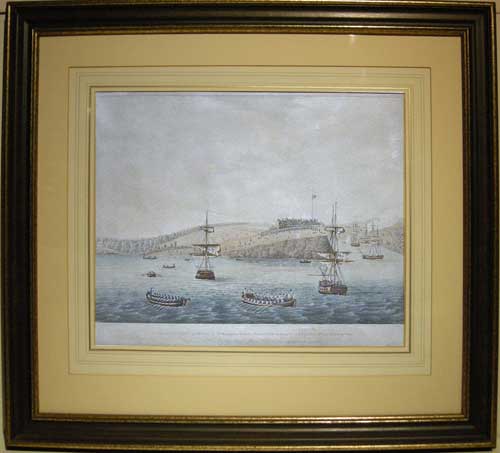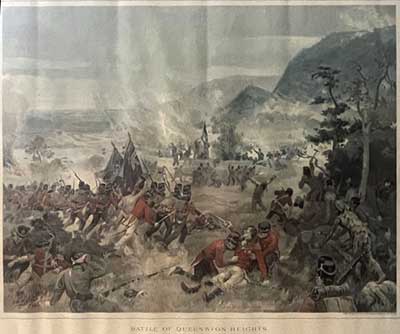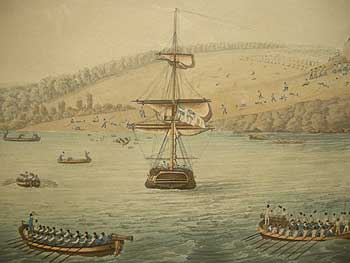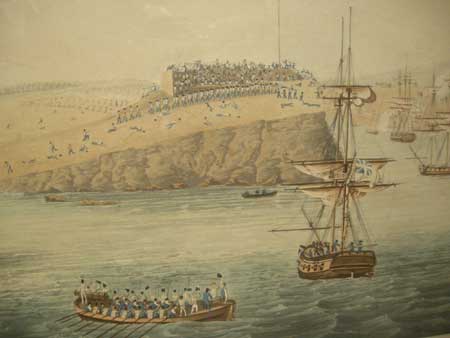
HAVELL Robert
after John Hewett Lieut. Royal Marines
Storming Fort Oswego.
by 2nd Battalion Royal Marines and a party of Seamen 15m. past twelve at noon.
dedicated to His Majesties Royal Marine Forces and those employed on the expedition.
A SCARCE Original Hand tinted aquatint after John Hewett, published by R. Havell, 1815. Plate II. [1815] 17 x 21” Frame 30 ½ x 33 ½"
Ref GH71 /ANNN/g.ands>ROOL SOLD PRICE CODE H
A British naval force attacked Fort [Ontario] Oswego on 6th. May 1814 during the War of 1812. An important American supply depôt, it was situated on Lake Ontario in north-central New York state. A landing force commanded by Lieutenant-Colonel Victor Fischer, consisting of 2nd. Battalion, The Royal Marines, a company of the Glengarry Light Infantry, a company of the Regiment de Watteville and a detachment of 200 sailors, took the fort while the frigates HMS 'Prince Regent' and HMS 'Princess Charlotte' engaged Oswego's guns. After destroying the defences and capturing supplies and several American schooners, the British withdrew.
The Cherwell is shown stern view in the centre left, Star, Magnet, Montreal, Niagara are also depicted along with three oared gunboats, one of which ferries reserves of DeWatteville's regiment to the fray.This depiction does not show the ships Prince Regent or Princess Charlotte. Storming of Fort Oswego, by 2nd Battalion Royal Marines and a party of Seamen; The attack took place at 15m past Twelve at Noon.
See detail images below
RETURN TO MILITARY CATALOGUE










